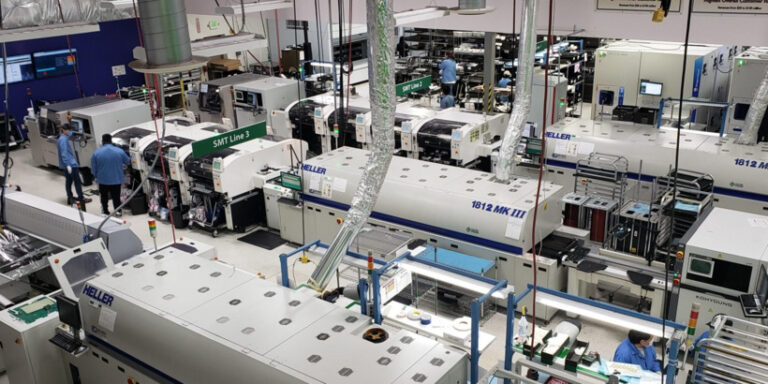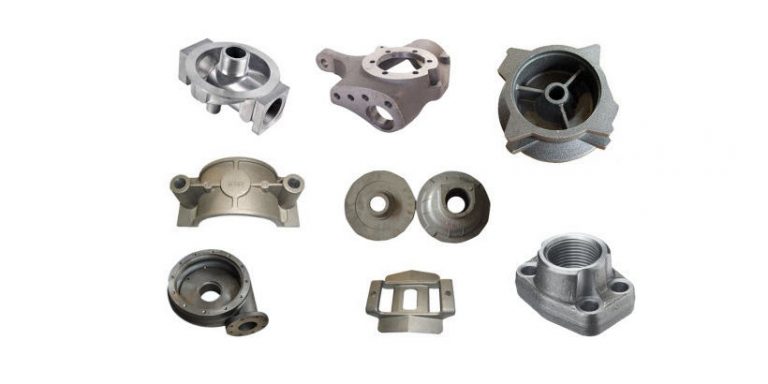Materials Engineering And Its Role In Modern Mechanical Design
Hey there! Have you ever wondered how the products we use every day are designed and made to be both functional and aesthetically pleasing? The answer lies in materials engineering, a field that plays a crucial role in modern mechanical design.
Materials engineering involves using science and technology to develop new materials or improve existing ones for various applications such as transportation, construction, electronics, healthcare, and more. This interdisciplinary field draws knowledge from physics, chemistry, mathematics, and even biology to understand the properties of different materials at the atomic and molecular level.
By manipulating these properties through processes like casting, forging, welding, or 3D printing, engineers can create custom-made components with specific characteristics tailored to meet the needs of each application.
In this article, we will explore some examples of how materials engineering has revolutionized modern mechanical design and what challenges lie ahead for future advancements in this exciting field.
Overview Of Materials Engineering
Did you know that advanced composites are stronger and lighter than traditional materials? According to metallurgy research, these materials have revolutionized modern mechanical design.
As a materials engineer myself, I can attest to the importance of understanding the properties and behavior of different materials in order to create innovative products.
Materials engineering involves designing, developing, and testing new materials for various applications. It’s fascinating work because we get to explore how tiny changes at the molecular level can greatly impact a material’s performance.
From aerospace components to biomedical implants, there is no shortage of exciting projects in this field.
Properties Of Materials
When it comes to materials engineering, understanding the properties of different materials is essential in designing mechanical components that are both durable and efficient.
The optical properties of a material can affect how light passes through it, which is important in applications such as lenses or solar cells.
On the other hand, thermal stability refers to a material’s ability to withstand high temperatures without degrading or changing its physical structure.
When choosing a material for a specific application, these properties need to be carefully considered alongside other factors like strength and cost.
It’s fascinating to see how engineers have developed new materials with unique combinations of properties by manipulating their composition at the atomic level.
This field continues to evolve and excite me as we discover more about the inner workings of materials and unlock new possibilities for modern design.
- Imagine being able to create an optical lens that doesn’t distort images even when exposed to extreme conditions.
- Picture using a highly thermally stable material for aerospace applications where high temperatures are inevitable.
- Think about developing innovative solutions for renewable energy systems by harnessing the unique optical properties of certain materials.
- Consider creating lightweight yet strong structural components by incorporating advanced composite materials with exceptional thermal stability.
The potential applications seem endless, and I’m excited to see what future developments will arise from our growing knowledge of material science.
Processes For Material Manipulation
I’m interested in learning more about heat treatment and casting processes for material manipulation. What are the common techniques used for each of these processes?
Heat Treatment
When it comes to materials engineering, one process that stands out is Heat Treatment. This technique involves the use of heat transfer and metallurgy knowledge to alter a material’s physical properties such as strength, hardness, toughness, ductility, and more.
The treatment can be done in various ways like annealing, quenching, tempering among others depending on the desired result. For example, if you want to increase your metal¡¯s hardness but maintain its brittleness; you would opt for quenching which quickly cools down the heated metal making it harder while keeping its brittle nature intact.
Understanding how different metals react under certain temperatures due to their unique chemical composition is crucial when performing this process since over or under-treating can lead to unsatisfactory results. Thus, mastering heat treatment requires both scientific knowledge and an artistic approach that balances between technicality and creativity.
Casting Processes
Now that we’ve discussed heat treatment as a process for material manipulation, let’s move on to another technique – casting processes.
As someone who has always been interested in the manufacturing industry, I find this topic particularly fascinating.
Casting involves pouring molten metal or other materials into a mold design and allowing it to cool and solidify into the desired shape.
However, just like any other process, there are challenges that come with casting such as defects like porosity or cracks caused by improper cooling or insufficient mold preparation.
It takes careful planning and attention to detail during the entire casting process from design to finishing touches to produce high-quality castings.
Applications Of Materials Engineering
Now that we’ve explored the various processes for material manipulation, let’s dive into the exciting world of applications in materials engineering.
Metallurgy research has led to the development of stronger and more durable metals, allowing engineers to create structures capable of withstanding extreme conditions.
Composite materials have also been a game-changer in modern mechanical design, providing a lightweight yet sturdy alternative to traditional materials like steel and concrete.
From aerospace technology to sports equipment, these innovations have revolutionized the way we approach problem-solving in engineering.
It’s fascinating how small advancements in materials science can lead to such significant improvements in our daily lives.
The possibilities are endless as researchers continue to push boundaries and discover new ways to manipulate matter at the atomic level.
Who knows what groundbreaking discoveries lie ahead?
Benefits Of Materials Engineering
I’m really interested in seeing how materials engineering has improved performance and increased durability in modern mechanical design. What have been some of the key advancements in this area?
Improved Performance
Hey there! I wanted to talk about one of the major benefits of materials engineering – improved performance.
By using advanced technologies and innovative techniques, materials engineers are able to enhance the structural integrity of products while also improving their overall design. This means that products can perform better than ever before, with longer lifespans, increased durability, and optimized functionality.
From aerospace components to medical devices, improved performance is a key factor in modern mechanical design. With ongoing advancements in materials science, we can expect even more exciting developments in this field in the years ahead.
Increased Durability
So, we’ve talked about how materials engineering can improve the performance of products. But what good is performance if it doesn’t last? That’s where increased durability comes in.
As a materials engineer, I’m always excited to see new developments in durability testing and life cycle analysis. By understanding how materials behave over time and under stress, we can create longer-lasting products that require less maintenance and replacement.
And with sustainability becoming an increasingly important issue, designing for durability is more crucial than ever before. So let’s dive into this next subtopic and explore the benefits of increased durability in materials engineering.
Challenges Of Materials Engineering
As with any field of study, materials engineering comes with its own set of challenges. One of the biggest obstacles that engineers face is developing new and innovative ways to test materials.
Advanced testing methods are crucial for understanding how a material will perform under different conditions, but creating these tests can be time-consuming and expensive. Additionally, computer simulations have become an important tool for predicting material behavior, but accurately modeling complex systems still presents a challenge.
Another difficulty in materials engineering is balancing competing demands such as strength versus weight or cost versus durability. Despite these challenges, however, advancements in materials science continue to push the boundaries of what we thought was possible in modern mechanical design.
Through continued innovation and collaboration between scientists and engineers across disciplines, we can look forward to even more exciting developments in this field in the future.
Future Of Materials Engineering
After discussing the numerous challenges faced by materials engineers, it’s time to look towards the future.
One of the most exciting developments is the creation and discovery of novel materials that have never been seen before. These new materials offer unprecedented properties that can revolutionize modern mechanical design in ways we cannot yet imagine.
In addition to creating new materials, there is a growing emphasis on material recycling. This involves finding innovative ways to reuse existing materials instead of always relying on newly sourced ones. By doing so, we reduce waste and our impact on the environment while still being able to create efficient designs.
The future of materials engineering appears bright with endless possibilities for innovation and sustainability.
Conclusion
In conclusion, as someone who is passionate about mechanical design and engineering, I firmly believe that materials engineering plays a pivotal role in modern-day design.
It’s fascinating to see how the properties of different materials can be manipulated and enhanced through various processes.
One interesting statistic regarding Materials Engineering that caught my attention was that it contributes to over 70% of all innovations in automotive, aerospace, and defense industries.
This highlights just how crucial this field is for advancing technology and improving our world.
However, there are also challenges associated with Materials Engineering such as cost-effectiveness, environmental impact, and safety concerns.
These issues require careful consideration and innovative solutions from experts in the field.
Looking ahead, I am excited to see what the future holds for Materials Engineering.
With emerging technologies like nanotechnology and biomaterials, we have new opportunities to create even more advanced materials with unique properties.
All in all, I believe that materials engineering will continue to play an essential role in shaping our world¡¯s technological advancements.






